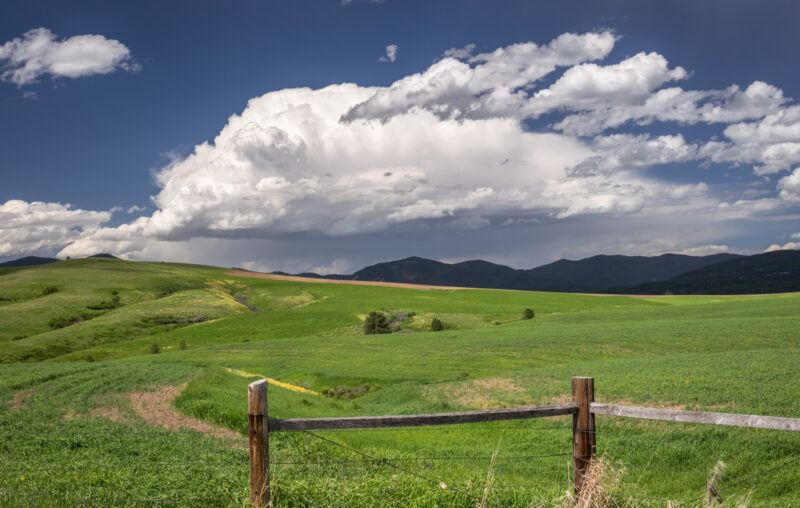‘Free-Market Environmentalism’ Is Working in Montana

Reprinted from Inside Sources
The first time I heard “free-market environmentalism,” I was pretty skeptical. My assumption about private capital was that its primary duty was to multiply, but this view demonstrated a failure to understand market potential. Markets allow people to provide capital and, so long as enough is offered, receive just about anything they’d like in return. That could be a new car, a set of solar panels, or a piece of land.
Even knowing this, though, it never occurred to me that with sufficient investment, a private organization could buy enough land to conserve an entire ecosystem and do so for the benefit of people and wildlife alike. This, however, is precisely what American Prairie is achieving on the great plains of central Montana.
To conserve 3.2 million acres, an area the size of the state of Connecticut, American Prairie is leveraging private philanthropy and property rights to buy ranch land, improve habitat for wildlife and open it up for public access. That access includes opportunities to hunt, bike, hike, fish, camp and more.
One of the most exciting things about this model is that it is built on the voluntary exchange of goods between private citizens, none of which have to be paid for with tax dollars. In other words, American Prairie can provide significant public benefit at no public cost, mainly due to the generosity of conservation-minded donors.
Do I mean to suggest that all conservation should be privatized and Yellowstone National Park should be managed by contractors? Certainly not, but given the current political landscape and how difficult it is for the government to buy and manage land effectively, it is important to look for new and more adaptive models. Some people still believe that conservation outcomes are best achieved when the government intervenes to spare our natural resources from the rapacious greed of individuals, but what if other people are convinced that those same resources have greater value when left intact? Theseindividuals exist, too, and thousands of them have chosen to donate to American Prairie’s efforts in Montana, giving voice to a market for publicly accessible land and wildlife.
The best part is that this is all actually working. American Prairie has already seen increased biodiversity on land where it has been able to graze its private bison herd instead of cattle. One recent study on its properties found that “bison reintroduction appears to function as a passive riparian restoration strategy with positive diversity outcomes for birds and mammals.”
Another study conducted over 29 years on three pastures in Kansas found that bison reintroduction increased native plant species richness by 86 percent, compared to only 30 percent for cattle.
By managing these lands, livestock and wildlife in tandem with neighboring ranchers, the Bureau of Land Management, and the Fish and Wildlife Service, American Prairie is investing in these communities, attracting ecotourism dollars, and bolstering the local economy.
Some of these benefits are felt most directly by American Prairie’s Wild Sky program participants, which financially incentivizes wildlife-friendly management practices on neighboring ranches. Interested neighbors can sign up for “Cameras for Conservation,” where American Prairie will pay to install game cameras on the rancher’s property and then pay them for each picture of an animal that that camera generates. If your game camera gets a picture of an elk or deer, that’s $50 in your pocket. A mountain lion? That’s $250. And if you document the presence of a grizzly bear or wolf, that will be $500 per animal, all while you are still running cattle on the property.
This is free-market environmentalism at work, aligning incentives in such a way as to make conservation and wildlife tolerance a good business decision rather than a burden for local landowners.
American Prairie is 20 years old and manages 450,000 acres, but counting the adjacent wildlife refuge and national monument, about 1.75 million acres are now being conserved for people and wildlife in central Montana.
To achieve its long-term goals, American Prairie will need to keep raising private capital, and outside groups will need to accept that ranching and conservation can, should and do coexist. America’s landscape and natural resources are vast, but projects like American Prairie’s illustrate how well-executed, free-market environmentalism can help conserve them for everyone.










